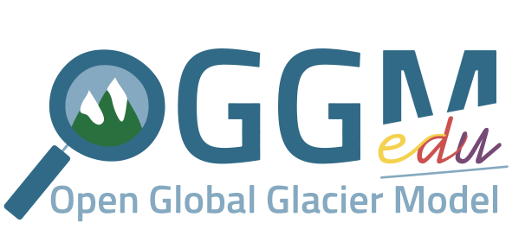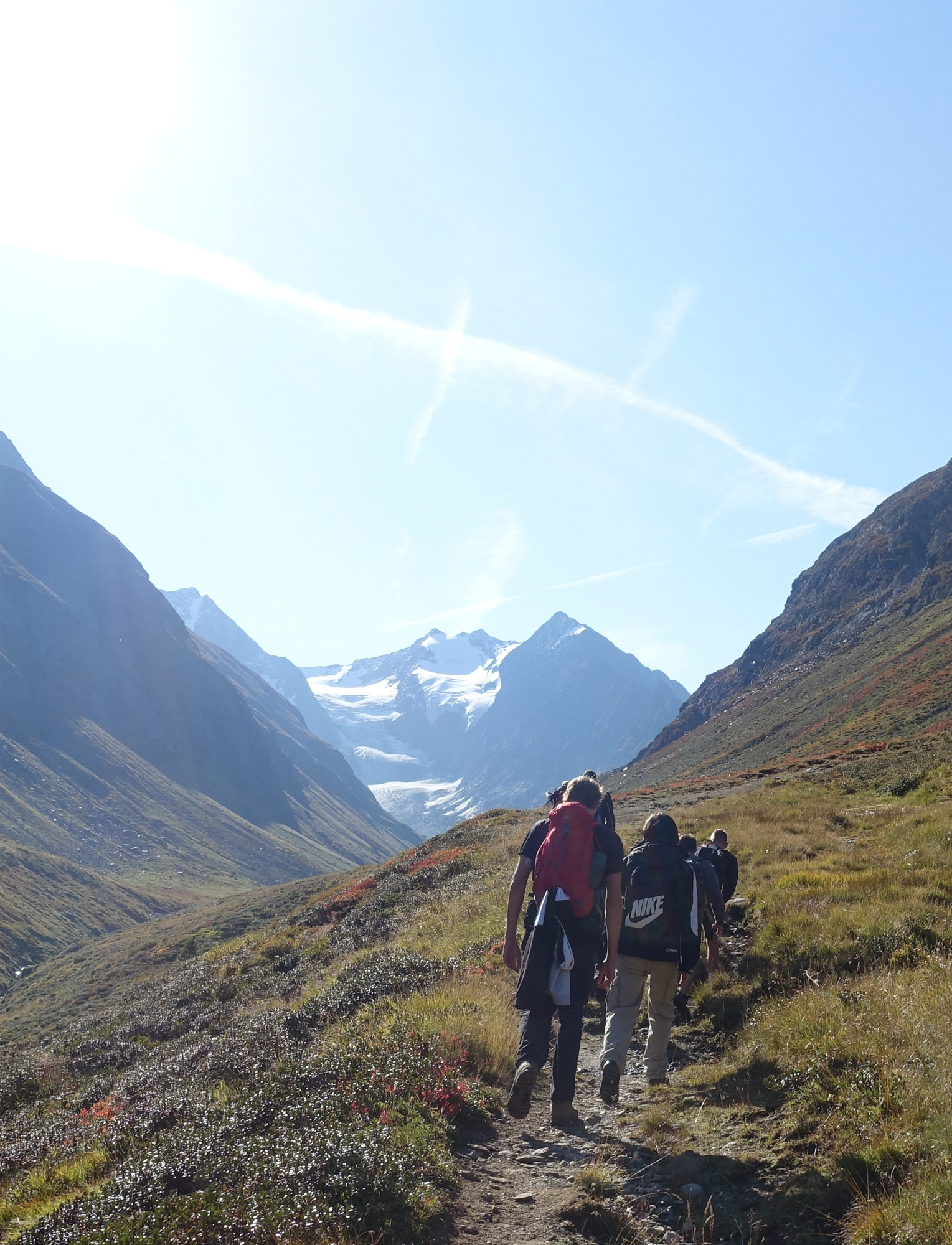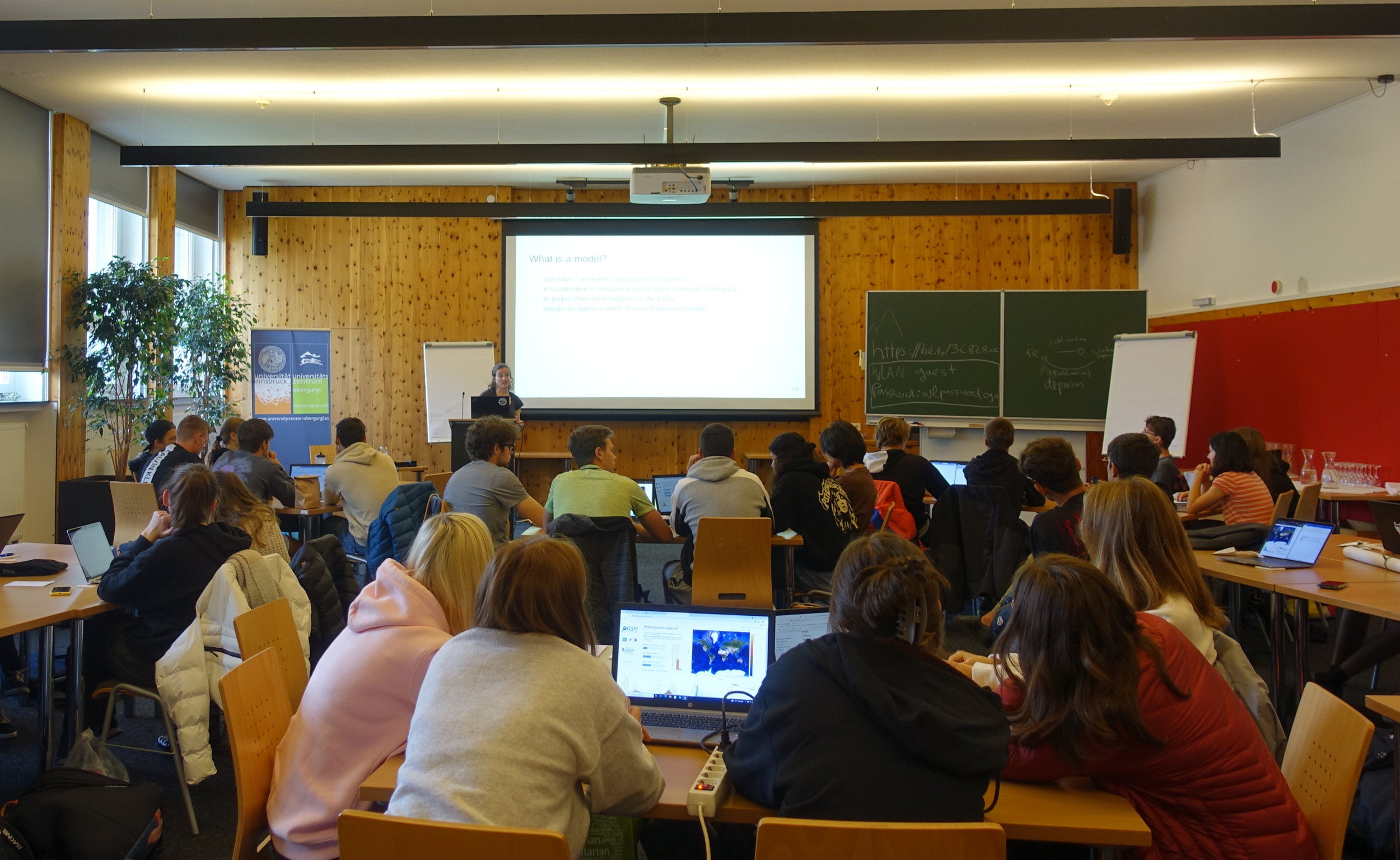
Students of schools in Schwaz, Tirol (BRG/BORG), Palermo (Italy) and Leuven (Belgium) wanted to study the impacts of climate change on different environments. The best way to do this is to learn from each other and go in the field together!
In a joint ERASMUS+ project, the first station of the international group was Obergurgl in the Oetz Valley, located above 1900 m asl and in the close vicinity of glaciers. They invited us, Lilian Schuster and Zora Schirmeister (two members of the OGGM community in Innsbruck), to guide them through the topic Glaciers in a Warming World.
We had 3 days together, which we wanted to use for a dense programm. On Monday afternoon, Lilian and I introduced the newest facts about climate change published recently in the IPCC AR6 Physical Science Basis report (including the new interactive climate atlas) and took the pupils into the world of high mountains and retreating glaciers. Especially for the pupils from southern Italy and Belgium this was a new scope to explore. We started with theoretical insights about glaciers with the help of graphics provided by OGGM-edu and went on with first impressions of the world’s glaciers using OGGM-edu’s Glacier Gallery. On the next day an excursion to the Gaisbergferner allowed all students to literally get in touch with a glacier.

Excursion to the Gaisbergferner under the bright sun.
By approaching the glacier completely by foot and avoiding the cable car, the pupils could study how glaciers form landscapes, which is well noticeable in the Gaisberg Valley and surroundings with the last huge glaciation of the Alps only 20 thousands years before. Further we discussed the questions: “Why are glaciers important?”, “How does their retreat affect water availability in mountainous regions?” and “What is the glaciers’ contribution to sea level rise?”.
The highlight was to go on the Gaisbergferner and measure solar radiation with the EcoBot and an Albedo smartphone app. Moreover, pupils measured the change of the glacier stream run-off over the day, detected former glacier extends since the Little Ice Age (using the length change measurements from the WGMS) and made their own calculations about the Art project Auswildern eines Zuchtgletschers that took place a few days before on the Gaisbergferner. Later on, the students could calculate melting rates of the glacier ice from their observations.
On the third day, the pupils enjoyed a digital hands-on workshop using the OGGM-edu apps. They learned about glaciers and their climate with the OGGM-edu World Glaciers Explorer and received new insights in the projected changes of alpine glaciers with the OGGM-edu Glaciers’ Evolution app. Finally, after a short introduction about glacier modelling, they run their own experiments on idealised glaciers using the OGGM-edu’s Glacier Simulator which helped them to better understand the physics of glaciers.
Finally, the pupils deepened topics they were interested most on Thursday and presented their results and insights in front of the school. We want to thank the motivated pupils and teachers for such an interesting and productive time together!
